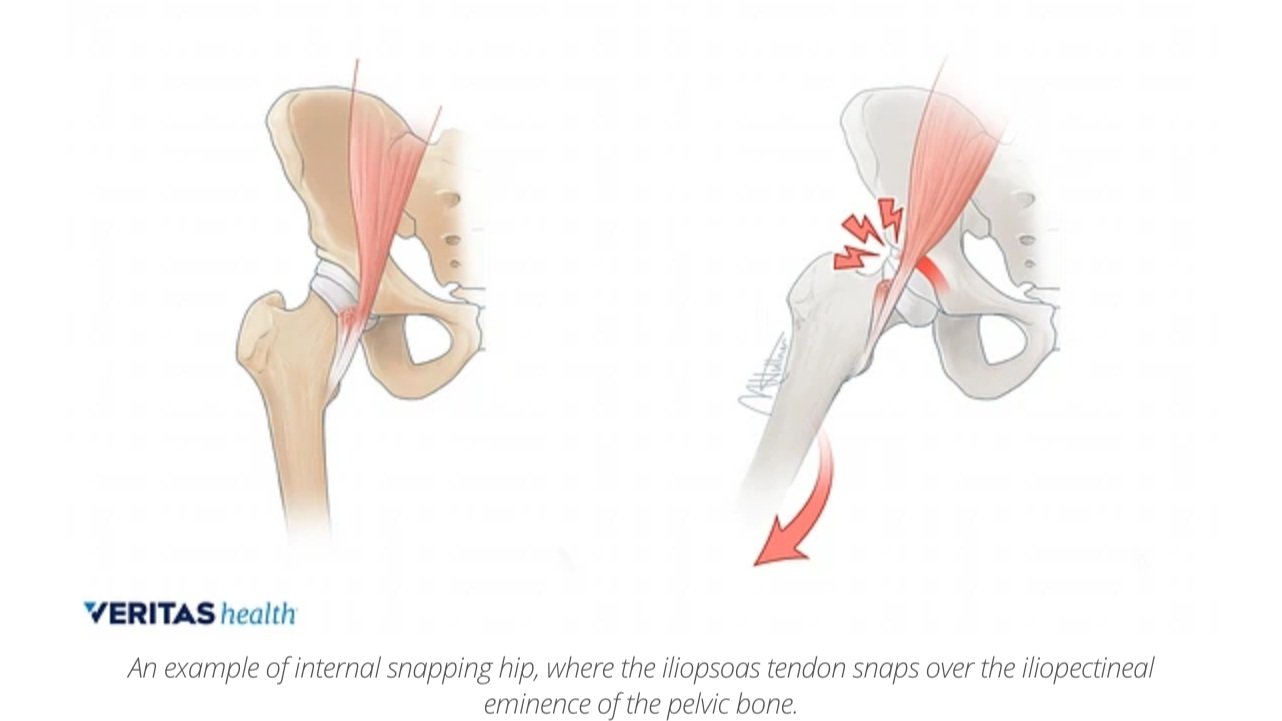Physical Therapy for Snapping Hip Syndrome
Snapping hip syndrome is a common injury among dancers, gymnasts, runners, and soccer players. Snapping hip syndrome occurs when a hip muscle or tendon slides and stretches over the hip bone, then snaps when tension is released during movement, causing pain and tightness in the front, back, or side of the hip. Physical therapy can help to loosen tension in the hip and strengthen and heal the muscles and tendons causing snapping hip syndrome for a safe return to sport and dance.
What is Snapping Hip Syndrome?
Snapping hip syndrome can occur when hip muscles are excessively used and become fatigued, tight, or swollen. Snapping hip syndrome happens when a muscle, tendon, or ligament slides over the hip bone and the muscle or tendon stretches, then snaps when the tension is released during movement.
Snapping hip syndrome is most common among dancers and athletes who regularly use their hip’s extreme range of motion and repeatedly lift or rotate the leg outward requiring hip mobility and flexibility, e.g. gymnasts, ballerinas, soccer players, runners, and in karate. Pain can result when a hip muscle or tendon becomes irritated or inflamed or the inflamed muscle or tendon irritates nearby bursa, which are lubricating, fluid-filled structures that reduce friction between the bone and soft tissue.
Symptoms of snapping hip syndrome include:
Snapping or popping sensation in the front, side, or back of the hip when lifting, lowering, rotating, or swinging the leg
Clicking sound when moving the hip in certain positions
Weakness in the leg when trying to lift it forward or sideways
Tightness and swelling in front, back, or side of the hip
Difficulty performing daily activities, athletics, and dance moves
There are three types of snapping hip syndrome:
1.Internal snapping hip: Internal snapping hip is the most common type that is caused by overuse, repetitive flexion, and external rotation of the hip. It occurs when the iliopsoas tendon snaps over the lower pelvic structures. Pain is felt in the front of the hip. Athletes that have tight hip flexors and an imbalance of strength in the pelvic, hip, and abdominal muscles are at a greater risk of developing this condition. Tightness in the quadriceps can also contribute to this condition. Internal snapping hip is prevalent in ballet dancers as they repeatedly lift and rotate their legs in specific technical movements.
2. External snapping hip: This is most often caused by a tight iliotibial band rolling over the femur and making a snapping noise during hip movement but can also be caused by weakness in the hip adductors. External snapping hip occurs most often in high-mobility sports like soccer, gymnastics, and running. Pain is felt on the outside of the hip and you may feel as if the hip is about to pop out of its socket when it snaps during normal movements.
3. Intra-articular snapping hip: This is the least common type of snapping hip syndrome. It is caused by an actual hip joint injury, such as an articular cartilage injury or a hip labral tear. This type of snapping hip can develop suddenly following a fall or direct trauma to the hip. The hip feels like it locks up and you may struggle with limited range of motion.
Physical Therapy for Snapping Hip Syndrome
Physical therapy can help to loosen tension in the hip and strengthen and heal the muscles and tendons causing snapping hip syndrome. During the initial evaluation, the physical therapist identifies the source of the muscle tightness that is causing the snapping as well as assesses for muscle imbalances or weakness in the hip flexors and adductors, quadriceps, pelvic region, and abdominal muscles.
Physical therapy for snapping hip syndrome can include:
Pain management through ice, heat, taping, or ultrasound
Manual therapy soft tissue and joint mobilizations to reduce muscle tension and relieve pain
Stretching exercises targeting the specific muscle or tendon that is causing the snapping hip to loosen tension and increase range of motion. For an internal snapping hip, the therapist may stretch the hip flexors, while for external snapping hip the therapist may stretch the IT band.
Strengthening exercises to address muscle weaknesses and imbalances and restore strength, power, and agility to the hip. While attention is primarily given to strengthening the hip muscles, the therapist will also work with the athlete or dancer to increase quadriceps strength and core strength.
Sport and dance-specific functional training, posture training, and dance or sport activity modifications to prepare for a safe return to sport or dance.
If you are experiencing a snapping, popping, or clicking sensation in the hip accompanied by pain, give our physical therapists a call to start physical therapy and address the issue early on for a safe return to your sport and dance!



